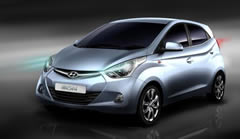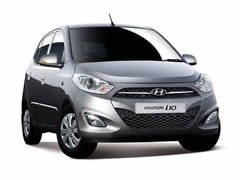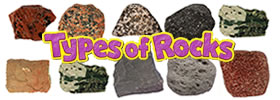Difference between Hyundai Eon and Hyundai i10
Key Difference: The Hyundai Eon is an entry level car by Hyundai. Whereas, the Hyundai i10 is a hatchback car that is considered superior to the Hyundai Eon.
 The Hyundai Eon is a hatchback entry level car by Hyundai. It was released in the market to compete small cars like Maruti Suzuki Alto and Suzuki Celerio. It was first launched in India on October 1, 2011. Later, it was launched in March and June 2012 in Philippines and Vietnam. It has recorded a good number of sales for the company. By 2014, the Hyundai Eon will be available in a new body design with facelifts and will also have 1.0 litre petrol/gasoline engine adopted from the Hyundai Santro Xing. The company claims a mileage of 26.3 kmpl; however as per ARAI ratings it delivers a mileage of 21.1 kmpl. The production of Eon is carried out at the Chennai plant in India. It has five variants in the Indian market and two in the Philippines.
The Hyundai Eon is a hatchback entry level car by Hyundai. It was released in the market to compete small cars like Maruti Suzuki Alto and Suzuki Celerio. It was first launched in India on October 1, 2011. Later, it was launched in March and June 2012 in Philippines and Vietnam. It has recorded a good number of sales for the company. By 2014, the Hyundai Eon will be available in a new body design with facelifts and will also have 1.0 litre petrol/gasoline engine adopted from the Hyundai Santro Xing. The company claims a mileage of 26.3 kmpl; however as per ARAI ratings it delivers a mileage of 21.1 kmpl. The production of Eon is carried out at the Chennai plant in India. It has five variants in the Indian market and two in the Philippines.
 On the other hand, the Hyundai i10 is a car that has been designed as a city-utility vehicle. The idea was to design a car that can provide comfort, space, safety and good fuel efficiency. Hyundai launched it in 2007 and it has created a great dominance in many markets. It is also termed as a city car by many sources. The Hyundai i10 is a hatchback car and was launched to compete with car like Maruti Suzuki Swift in India. It has many features such as rear defogger, rear wiper, audio system with CD and USB playback, Bluetooth, electric power windows, etc. There are five variants available in India: D lite, Era, Magna, Sportz and Asta. In Europe, there is a 1.1 litre CRDi diesel engine available for i10 customers. By early 2014, the second generation of the Hyundai i10 is expected to be launched.
On the other hand, the Hyundai i10 is a car that has been designed as a city-utility vehicle. The idea was to design a car that can provide comfort, space, safety and good fuel efficiency. Hyundai launched it in 2007 and it has created a great dominance in many markets. It is also termed as a city car by many sources. The Hyundai i10 is a hatchback car and was launched to compete with car like Maruti Suzuki Swift in India. It has many features such as rear defogger, rear wiper, audio system with CD and USB playback, Bluetooth, electric power windows, etc. There are five variants available in India: D lite, Era, Magna, Sportz and Asta. In Europe, there is a 1.1 litre CRDi diesel engine available for i10 customers. By early 2014, the second generation of the Hyundai i10 is expected to be launched.
Comparison between Hyundai Eon and Hyundai i10:
|
|
Hyundai Eon Sportz |
Hyundai i10 Asta |
|
Engine Displacement (CC) |
814 |
1197 |
|
No. Of Cylinders |
3 |
4 |
|
Max Power (PS) |
56PS@5500rpm |
80PS @6000rpm |
|
Max Torque (NM) |
74.5Nm@4000rpm |
111Nm @4000rpm |
|
Transmission |
Manual |
Manual and Automatic |
|
No of gears (Gears) |
5 |
Manual: 5 Automatic: 4 |
|
Fuel Type |
Petrol |
Petrol |
|
Fuel Tank Capacity (litre) |
32 |
35 |
|
Turning Radius (metre) |
5 |
4.7 |
|
Ground Clearance |
170mm |
165 mm |
|
Boot Space (litre) |
215 |
225 |
|
Length (mm) |
3,495 |
3,585 |
|
Width (mm) |
1,550 |
1,595 |
|
Height (mm) |
1,500 |
1,550 |
|
Wheelbase (mm) |
2,380 |
2,380 |
|
Front Suspension |
McPherson strut with coil spring & anti-roll bar |
McPherson strut with coil spring & anti-roll bar |
|
Rear Suspension |
Torsion beam axle with coil spring |
Torsion beam axle with coil spring |
|
Front Brake Type |
Disc |
Disc |
|
Rear Brake Type |
Drum |
Drum |
|
Front Tyres |
Tubeless, 155/70 R13" |
Tubeless, 155/80 R13" |
|
Rear Tyres |
Tubeless, 155/70 R13" |
Tubeless, 155/80 R13" |
|
0-60 (seconds) |
7.09 |
5.88 |
|
0-100 (seconds) |
18.62 |
14.12 |
|
Top Speed (KPH) |
138 |
155 |
|
Seating Capacity (Person) |
5 |
5 |
|
ABS(Anti-Lock Braking System) |
No |
Yes |
|
EBD (Electronic Brake-forceDistribution) |
No |
No |
|
Electronic Stability Program |
No |
No |
|
Brake Assist |
No |
No |
|
Traction Control System |
No |
No |
|
Airbags |
1 (Driver Only) |
2 (Driver & Co-Driver) |
|
Steering Type |
Power Steering with tilt ability |
EPS (Electronic Power Steering) with Tilt feature |
|
Cruise Control |
No |
No |
Note: Comparison is made between the top models and may vary among different markets.
Image Courtesy: mouthshut.com, carsalesindia.com









Add new comment